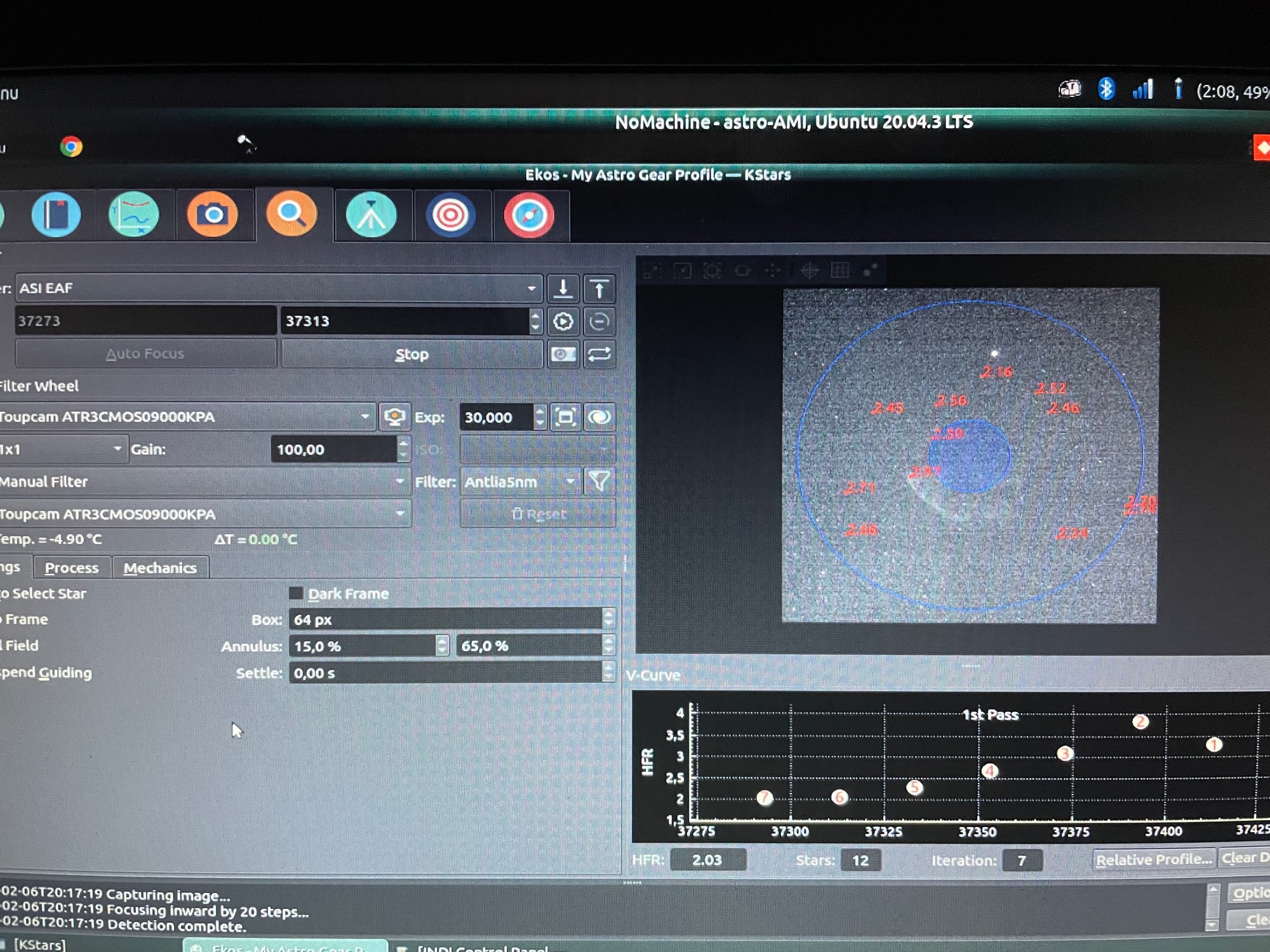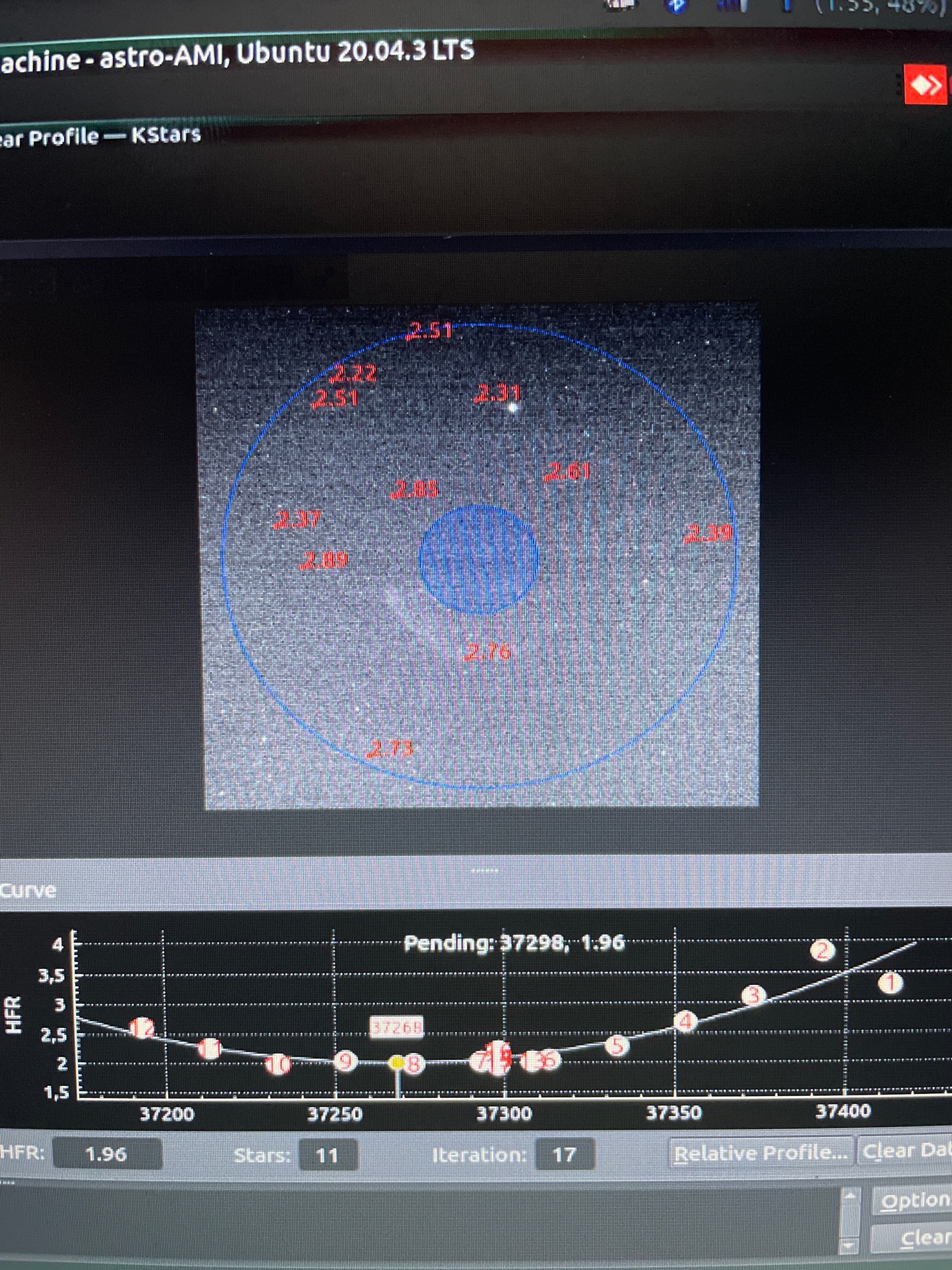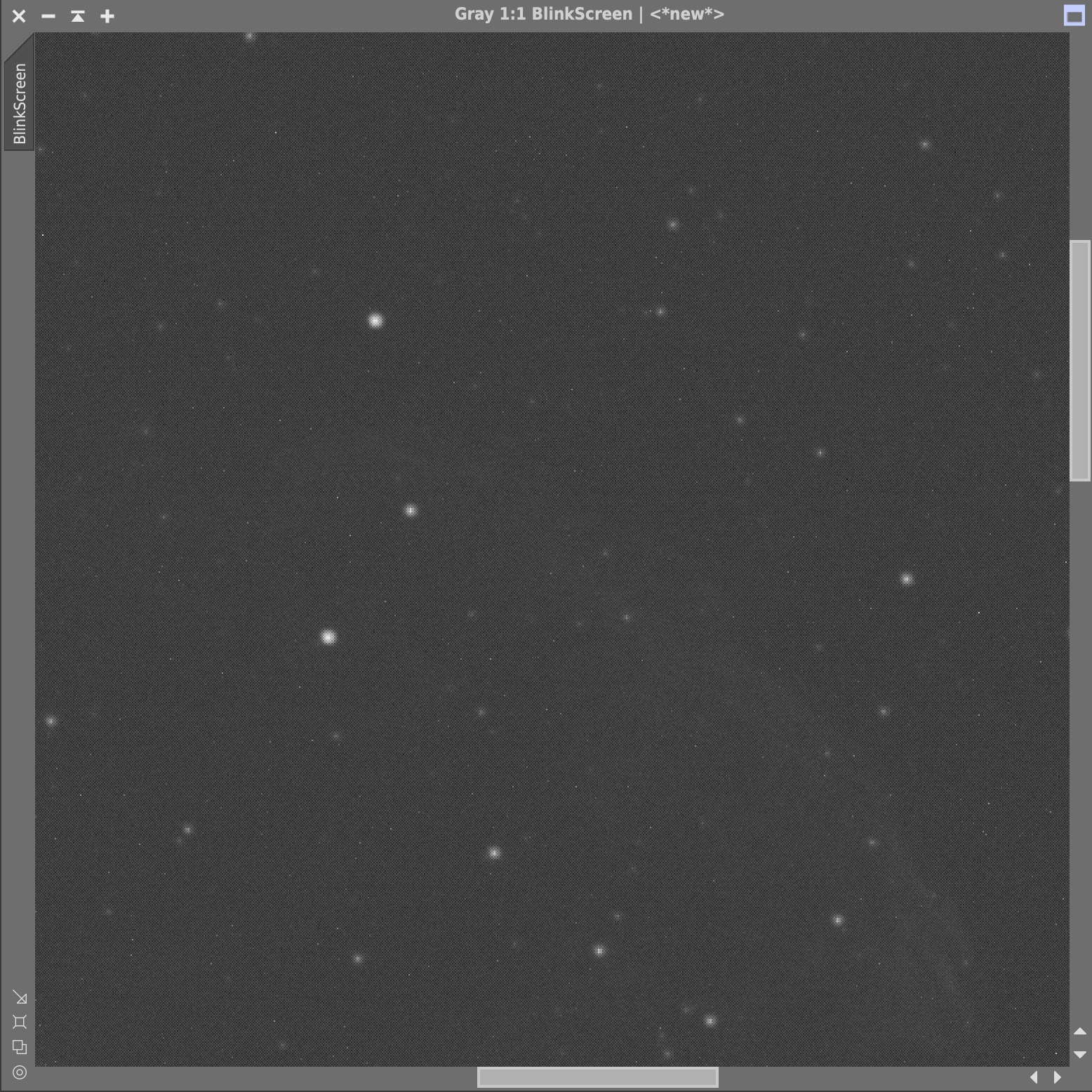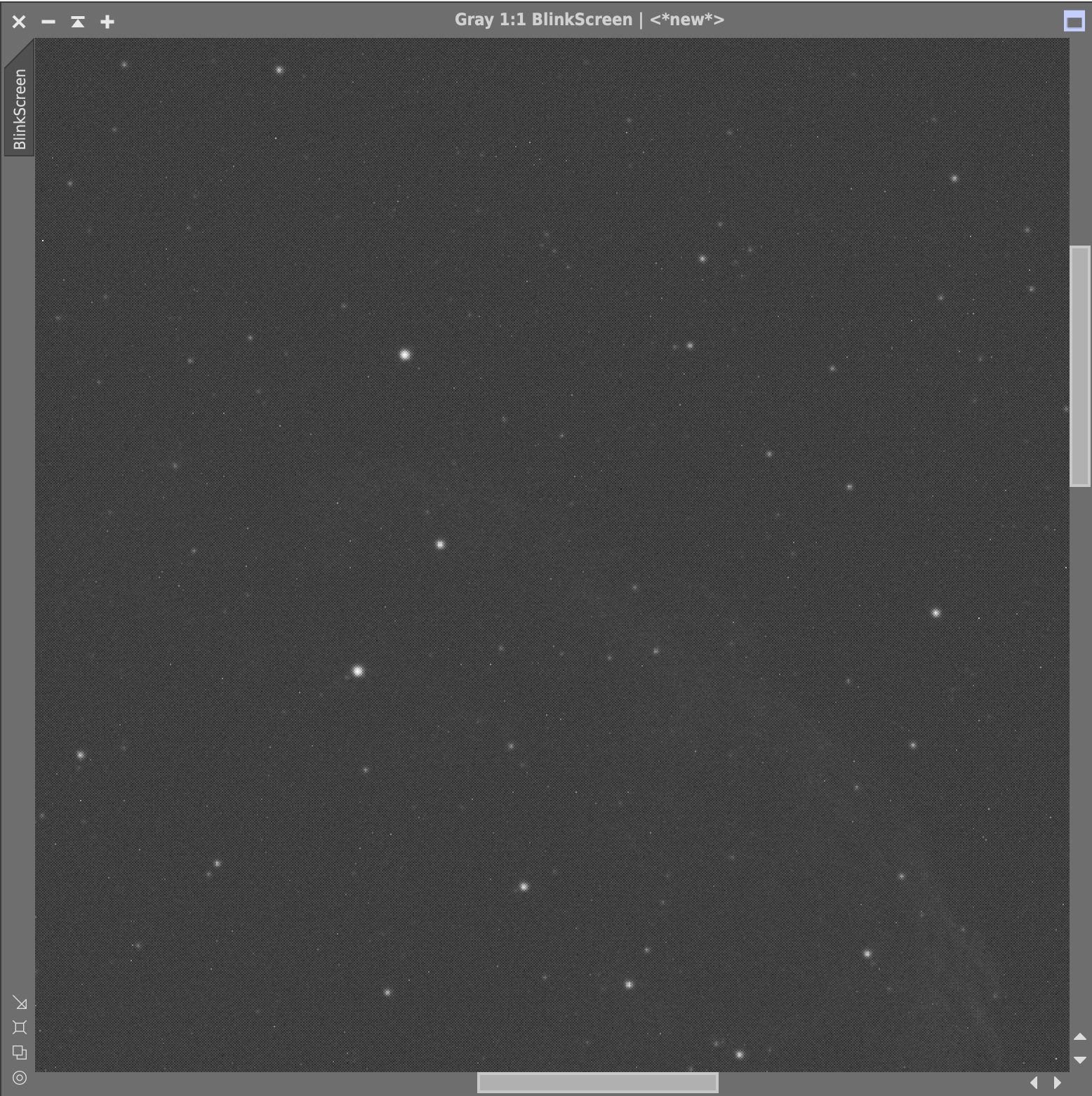INDI Library v2.0.7 is Released (01 Apr 2024)
Bi-monthly release with minor bug fixes and improvements
For those with focus issues
- Magnus Larsson
-

- Offline
- Platinum Member
-

- Posts: 643
- Thank you received: 62
Replied by Magnus Larsson on topic For those with focus issues
I am also an SCT owner and know what you mean with image shift when shifting focus orientation. However, if you use Linear mode, the risk for this is minimized, as the focuser does not shift direction (it does when moving back for the second go, but then moves forward again). Maybe more importantly: I use a Crayfoord focuser on my SCT, which removes all such issues. Much cheaper than a new scope, and you can keep the nice optical performance in the C8 Edge
Magnus
Please Log in or Create an account to join the conversation.
- Ron Clanton
-
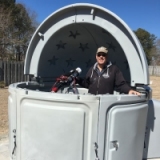
- Offline
- Elite Member
-

- Posts: 225
- Thank you received: 16
Replied by Ron Clanton on topic For those with focus issues
Yes, I use linear focusing. It takes a bit longer than polynomial, but I get better results. I'm using the Celestron electronic focuser, which is "okay". It has some backlash... but doesn't really matter with the linear process.
Ron
Please Log in or Create an account to join the conversation.
Replied by Euripides on topic For those with focus issues
Starts with the recognition of more than 30-40 stars and then I can see with every single step - even with just step 5 - gradually goes down to 10 or less with a bad distribution across the field. The HFR calculation is bad and I am not really confident that this is good for the algorithm.
Any idea is more than welcome. I find myself to spend more time to this than before with just a bahtinov mask :-/
Attachments:
Please Log in or Create an account to join the conversation.
- Hy Murveit
-
 Topic Author
Topic Author
- Offline
- Administrator
-

- Posts: 1222
- Thank you received: 565
Replied by Hy Murveit on topic For those with focus issues
The V-curves in your screenshots look reasonable to me. At least that's about what I get and I think the focusing works well for me.
If you're hoping for more stars, you can play with the StellarSolver parameters (e.g. perhaps your minimum star size is filtering out stars once they get small and focused), but honestly, it may be working fine.
Why not try a Bahtinov mask and see if you're get about the same focus position as autofocus?
Hy
Please Log in or Create an account to join the conversation.
Replied by Euripides on topic For those with focus issues
Thank you Hy
Please Log in or Create an account to join the conversation.
- Malcolm Whinfield
-

- Offline
- Premium Member
-

- Posts: 114
- Thank you received: 5
Replied by Malcolm Whinfield on topic For those with focus issues
I haven't bothered too much as I can blaming my optics and working around it. The way I work around is starting lower than my expected focal point.
Please Log in or Create an account to join the conversation.
Replied by Euripides on topic For those with focus issues
1. Manually I go as far as good I can, regularly HFR 1,2-1,4 and then start Auto Focus.
2. Iterration 1: 40+ stars found across the circle
3. Iterration 2: 20 stars found only on one side of the circle
4. Iterration 3: 5 stars found, 3 on the right, 1 on the top and 1 at the bottom
etc..
(Tried multiple steps from 100 till 10.)
I can see that on the the 1st pass went down for example to HFR 1.2, but then - cause it looses all those stars - the calculation changes and increases.
So when it finally says done after 20 Iterrations, there are only 5-6 stars with HFR 2+
Please Log in or Create an account to join the conversation.
Replied by Euripides on topic For those with focus issues
After meridian flip, tried 3 times the autofocus (while I was quite close to focus) and every time I could a different step number. So I left it unattended without any change, to refocus every 60'.
While reviewing now the images:
Hour 1 (when I pressed autofocus) :
Later on:
This is driving me crazy....Clear skies, perfect conditions.
Attachments:
Please Log in or Create an account to join the conversation.
Replied by Euripides on topic For those with focus issues
As soon as I got it back to 5, everything works just fine
Please Log in or Create an account to join the conversation.
Replied by Martha on topic For those with focus issues
I'd like to refresh the thread. Recently I bought a better class Altair triplet and the first impression says that it has a higher quality focuser. I tried to compare the refractor with another one that I have, it's optically superb Altair Starwave 102ED F/11 equipped with an ATM motorised focuser controlled manually via Arduino. I tried to capture Mars using the two refractors subsequently. I found that the focuser of the triplet keeps the planet perfectly in one place (excellent PA), while the focuser in the cheaper F/11 doublet is lifting the planet up or dropping down depending on moving the rocuser inwards or outwards. Did you take this problem of cheaper focusers into account?
Very soon after purchasing the triplet I decided to buy the ZWO EAF. I already performed three motorised focusers, one is driven straight by OnStep/Ekos, while two other are driven by the Arduino and my code. In the case of the triplet I expect excellent quality and comfort of focusing, that's why I ordered the EAF. It's installed now and waits for the clear sky. I'm going to perform a test of the backlash by moving it outwards for a number of steps and inwards.
My EAF is attached straight to the main axis of the focuser instead of the single knob and here I have a question about the number of initial steps. Some of you write that they set initial steps of 200-500 ticks, while others write that they use 20-50 ticks. What does it depend on? I have read all the thread and nowhere is mentioned whether the stepper motor should be attached to the main axis or to the 10:1 reducer axis. The ratio of 200-500:20-50 suggests that the bigger values are related to the reducer axis. I found (using a Bahtinov mask) that I get focus around 7600 ticks, which is around 27mm from its absolute zero position. Is it OK?
My second question is about the bin2 mode. I use a Canon 6D that has a quite big 6.54um pixel. The cameras mentioned within the thread usually have something about 3.7um pixels. I understand that my pixel works like 4 others, so should I consider the bin2 mode (if the Canon 6D offers it)?
I use a 3" x1.0 field flattener, so my stars are slightly elongated on edges of the full frame and of course in the corners. I think the 75-80% as the second value of the annulus should be OK.
I consider configuration like below:
- full field (should the "autoselect star" be selected then?),
- annulus 25% - 75(80)%
- SEP,
- linear algorithm,
- 5% tolerance,
- initial step 50.
Please let me know if I should think about something else. The good weather in the UK is so rare that I have no time for long experimentation. I appreciate your common experience and knowledge.
I will test with pleasure whether the linear algorithm brings the same focus point and the HFR like the polynomial one. I have experience with 10" budget Newtonian OTA equipped with Hexafoc 2.5" RnP focuser and the polynomial algorithm working with the ATM geared stepper motor (OnStep) and I was quite happy with the results, if the process was successful. Unfortunately, most often it fails. I hope the linear algorithm with the EAF attached to the high class focuser will surprise me positively.
Best regards,
Martha
Please Log in or Create an account to join the conversation.
- Jose Corazon
-
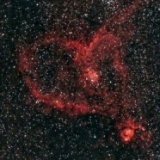
- Offline
- Supernova Explorer
-

- Posts: 1119
- Thank you received: 182
Replied by Jose Corazon on topic For those with focus issues
Do you mean "backlash", "slippage" or "missing steps"? Slippage and missed steps is going to be the much bigger problem than backlash. With a heavy camera, both can become a massive problem, especially if your telescope is nearly vertical.
"My EAF is attached straight to the main axis of the focuser instead of the single knob and here I have a question about the number of initial steps. Some of you write that they set initial steps of 200-500 ticks, while others write that they use 20-50 ticks. What does it depend on? I have read all the thread and nowhere is mentioned whether the stepper motor should be attached to the main axis or to the 10:1 reducer axis. The ratio of 200-500:20-50 suggests that the bigger values are related to the reducer axis."
Depends on 1) your code (how many steps does it allow), 2) on the torque your stepper motor can deliver (if attached to the main axis, you will probably require microsteps to achieve precise focus resolution. Microstepping reduces the available torque and will likely result in missed steps, especially when the telescope is nearly vertical and has to lift the camera and everything attached to it, so I have my focuser (also controlled by Arduino) attached to the reducer axis to minimize the need for microstepping.
Please Log in or Create an account to join the conversation.
Replied by Doug S on topic For those with focus issues
indilib.org/forum/ekos/11668-new-focus-a....html?start=24#82726
Basically, you shouldn't need to guess the step size. It should ideally be calculated from your CFZ size, EAF/focuser drawtube travel, and a couple of user selectable parameters. See the formula for New CFZ as defined in the post above. Then you'll want to know (or measure) your focuser travel per revolution and match this up to the EAF counts/rev. Set your step size to be somewhere between 1/2 and 1 CFZ. You don't want to jump over the CFZ, and if you set it too small, you'll just waste time during focus jumping within the same CFZ. As for how the EAF is mounted, If I remember correctly from the user manual, you should not mount on the 10:1. The counts/revs is already plenty high enough to do fine focus work as is. Expect backlash on the order of 85 counts (That's about where mine was when I tested, and it was confirmed by others in the forum with EAF).... Good luck & CS, Doug S
Please Log in or Create an account to join the conversation.

